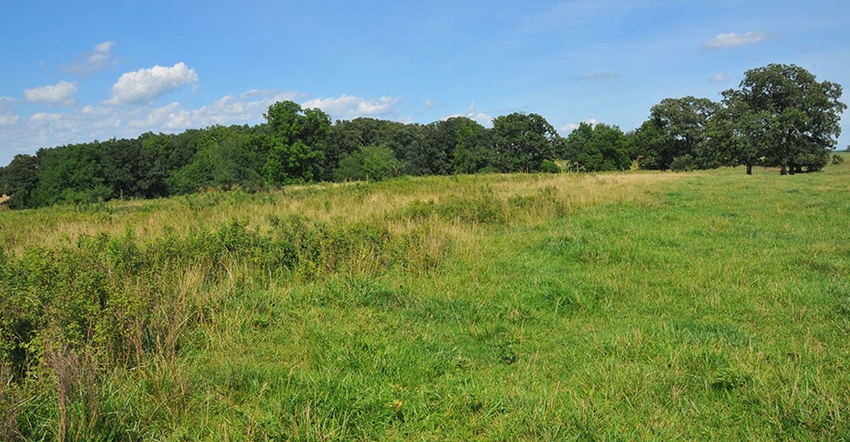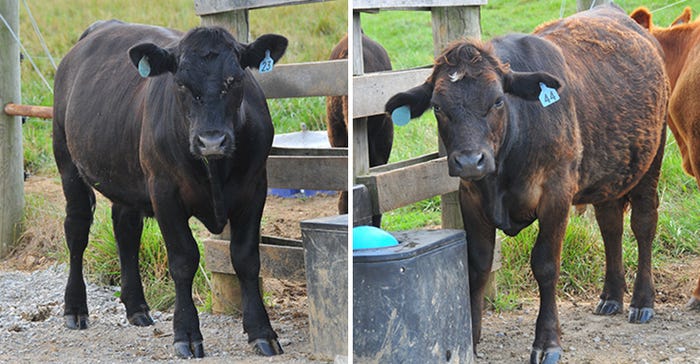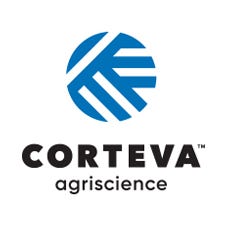Toxic fescue costs your operation big bucks. Suppress seedheads with Chaparral™ herbicide to see an improvement on herd health and productivity.
March 20, 2019

Sponsored Content
You used to know us as Dow AgroSciences — a company synonymous with rangeland and pasture management. Now, as Corteva Agriscience™, Agriculture Division of DowDuPont, that legacy lives on. But more than bringing together industry-leading products and expertise, it’s about reaffirming our shared commitment to putting ranchers’ needs first.
Through trusted, proven, reliable products, including GrazonNext® HL, PastureGard® HL and Remedy® Ultra herbicides, we’re able to help you maximize your lowest-cost feed source: your grazing land. While the challenges to grow the best pastures may be many, we work closely with you to find answers that align with your individual goals.
When you need answers beyond broadleaf weeds, brush and mixed species complexes, we work to find innovative solutions. Consider, for example, the losses to fescue toxicosis.
Protect your herd — and your bottom line — against toxic fescue
Fewer weeds in your pastures means more forage for grazing. And in tall fescue pastures, fewer seed heads means less fescue toxicosis. An application of the right herbicide early this spring can help accomplish both.
Seedhead suppression provides the starting point for more effectively managing fescue toxicosis. The seed head is where the alkaloids produced by the endophyte concentrate, typically at a rate five times higher than in leaves or stems. Reducing or eliminating those seed heads can help decrease the incidence and severity of fescue toxicosis in beef cattle grazing operations.
The toxins in tall fescue peak in the seed head when the seed head is most palatable, which is generally mid- to late May. But because of the toxins’ residual effects, animals consume high concentrations in the spring and then suffer from heat stress when the effects are worsened by high summer temperatures. Typical effects on cattle include elevated body temperature, lower milk production, higher respiration rate and rough hair coat. Weight gains decline because of less feeding and higher water intake. It also can mean fewer calves on the ground because of poorer conception rates and lower calving percentages.
Researchers peg the annual financial hit to the cattle industry at $1 billion — $338 million of that comes from reduced wean weights in the cow-calf sector. Given today’s cattle economics, producing low-cost pounds of gain is more important than ever. It’s easy to understand why tall fescue management strategies warrant your attention.

A new way to manage fescue toxicosis
An application of Chaparral™ herbicide as early as three weeks before seed head emergence and as late as the early boot stage keeps fescue plants in a high-quality vegetative state while taking toxic seed heads out of the grazing picture. And when that happens, average daily gains in stocker cattle have been shown to increase 0.33 to 0.62 pounds per day in treated pastures.
When applications of Chaparral are timed for optimum seedhead suppression, they will control winter annual weeds and other early season broadleaves, such as buttercup, goldenrod, poison hemlock, biennial musk, bull and plumeless thistle, and wild carrot. The residual control Chaparral provides also will control several species that emerge after application, including ragweed, cocklebur, chicory and horsenettle.
For more information about combining weed control with toxic fescue management, contact your local ag chem dealer or visit BetterFescueGrazing.com.
Label precautions apply to forage treated with Chaparral or GrazonNext HL and to manure from animals that have consumed treated forage within the last three days. Consult the label for full details.
™®Trademarks of Dow AgroSciences, DuPont or Pioneer, and their affiliated companies or their respective owners. Chaparral and GrazonNext HL are not registered for sale or use in all states. Contact your state pesticide regulatory agency to determine if a product is registered for sale or use in your state. State restrictions on the sale and use of Remedy Ultra apply. Consult the label before purchase or use for full details. Always read and follow label directions. ©2019 Dow AgroSciences LLC
About the Author(s)
You May Also Like





